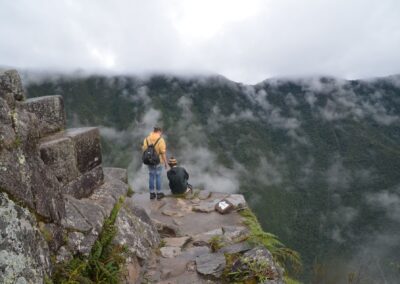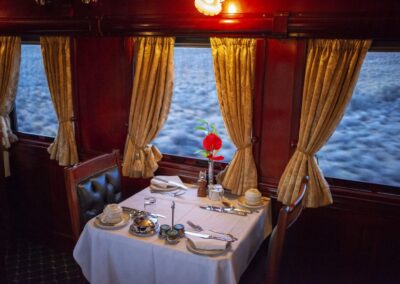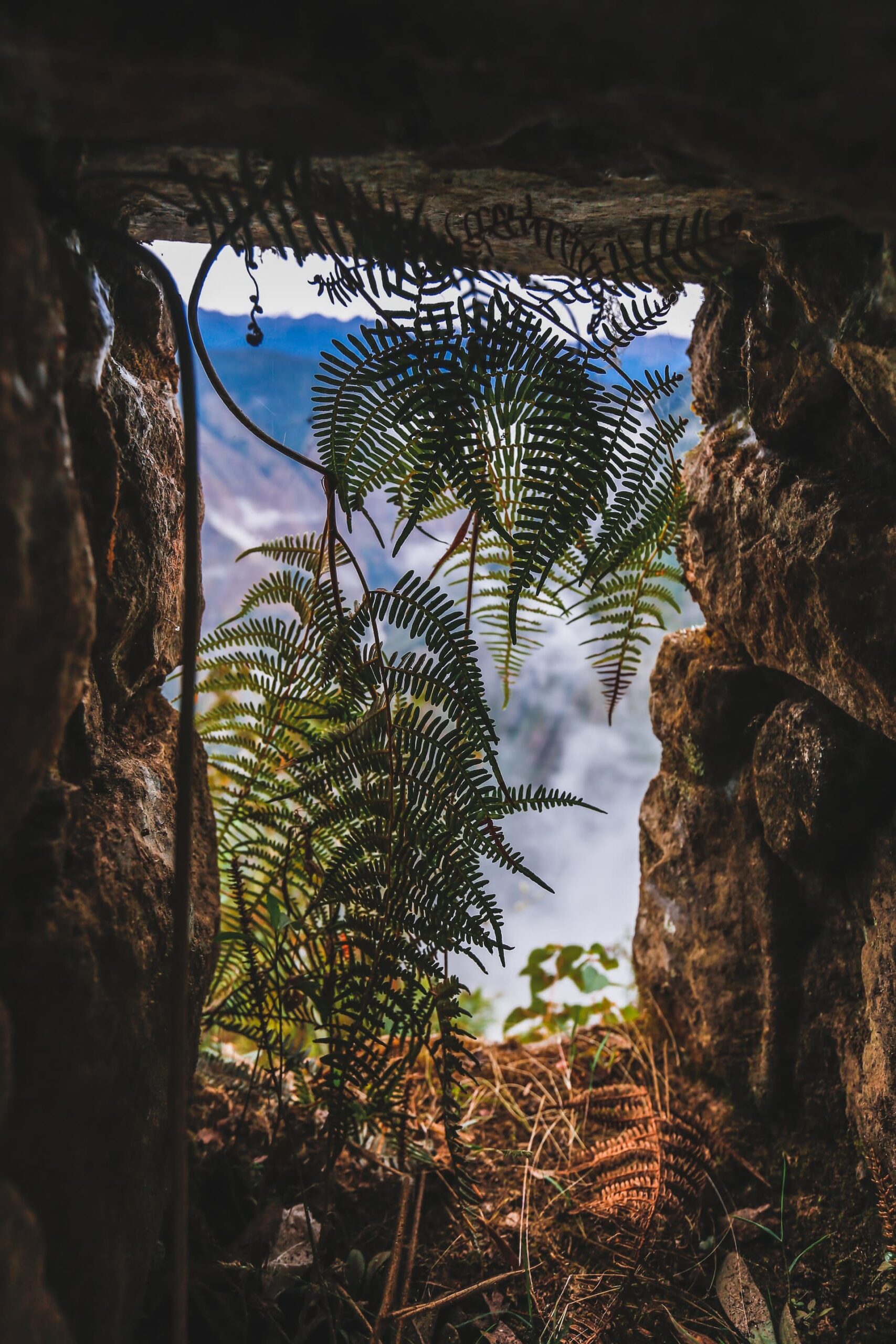Hiram Bingham Luxury Train to Machu Picchu
Full Day Tour
ACTIVITIES
Route
DURATION
1 Day
MAX. ALTITUDE
2,430 mts
LOCATION
Machu Picchu, Cusco
Introduction
The experience of Tour to Machu Picchu by train Hiram Bingham 1 day is the ideal experience if we are looking to have a luxury trip, this service has more additional than other services and at the same time gives us exclusivity when visiting one of the modern wonders of the world. It is important to mention that the existence of this place is not recorded in the chronicles that tell the history of the city, which is why research continues even today.
During the tour we will be able to learn more about the history that has been recorded so far and we will visit each important place in this place such as the House of the Watchman, the Intihuatana, the Temple of the Condor and others. In the afternoon we will enjoy some free time at the Sanctuary Lodge.
This experience is intended for all ages and can be done individually to meet new people, as a couple or with friends with whom to share emotions and also as a family to live an unforgettable adventure.
Get inspired for your next vacation with testimonials from traveling customers like you!
Why book this tour?
Experience thrills at the modern world wonder of Machu Picchu.
Enjoy the magical train trip with Luxury and Comfort.
Capture the best shots from the House of the Guardian.
Discover the mystery behind the Intihuatana.
Live the experience of spending time inside the Sanctuary Lodge hotel.
Summary Itinerary
Day 01: Tour to Machu Picchu by Hiram Bingham Luxury Train
-
07:30 – 08:30 Transfer from your hotel to the Poroy train station.
-
09:05 – 12:24 Train from Poroy to Aguas Calientes (Hiram Bingham Service).
-
12:30 – 13:00 Travel up by bus to Machu Picchu.
-
13:00 – 15:30 Guided tour inside the Archaeological Center of Machu Picchu.
-
15:30 Tea Time at the Sanctuary Lodge Hotel
-
17:15 – 20:00 Train from Aguas Calientes to Poroy ( Service Hiram Bingham).
-
20:10 – 22:00 Transfer from Ollantaytambo to your hotel in Cusco.
-
Hotel night in Cusco (Request your reservation with us).
Detailed Itinerary
The Machu Picchu sanctuary is a beautiful place where we can enjoy the Inca history and culture knowing every mystery behind this citadel where we can find different well-organized sectors. Some of these that are restricted by schedules, however, are always compensated with the rest of the spaces that we manage to visit. The spaces that we will visit in our experience are:
- Guardian House: This beautiful place is located in the highest area of the Inca citadel on the Agricultural Area. Its function was to control the entrance to the Inca city and review the entire agricultural and urban area. From here you can see a panoramic view of the entire citadel and the entrance to the old Inca trail. It has three walls: In the central wall we find three large windows, which allow us to easily observe the entrance to the Inca trail and the Inca bridge, the only means of communication with the outside world. We can also see how the Incas covered the enclosures with a ichu roof.
- Llacta Punku: It is the income for the urban sector, it is located limited by a deep excavation. This sector is located from the cemetery by a long staircase towards the peripheral neighborhoods, it has a system of points to hold a wooden door, in person and not as an element of restriction or security since the city can also be accessed by other roads.
- Ceremonial Plaza: It is a set of enclosures made around a quadrangular patio, you can see three polygonal walls, made with immense stone pieces assembled perfectly. The presence of three windows and two niches on each side stands out. It is considered that the function of these windows was probably purely religious, next to this we can find a different enclosure called The House of the Priest.
- Temple of the Sun (1:00 p.m. – 4:00 p.m.): This enclosure has a finely polished two-story structure: the first is semi-underground and the second features a beautiful semi-circular wall with perfect finishes, with an incline towards its interior due to what is called “Torreón”. It was used to celebrate religious ceremonies, especially during the months of June and December, special dates for the Solstices.
- This Tower has two trapezoidal windows, one oriented towards the most extreme point of the winter solstice that takes place on June 22 and the other oriented towards the Puerta del Sol (Intipunku) for the summer solstice that occurs on June 22. from December. In the middle of this architecture we can find a central rock, polished in the shape of an altar that was used for the ceremonies of interpretation of the path that the sun followed. It is built on a large rock, under which there is a small cave, which has been worked and covered with a thin wall, this is because it probably fulfilled the function of a mausoleum, because it has niches of a moderate size, where they placed the mallquis or mummies where they were worshipped.
- Temple of the 3 windows: This enclosure has three polygonal walls, built with enormous stone pieces perfectly assembled, highlighting 3 windows and 2 niches at each end. The function they had was religious magic and not only aesthetic.
- It was Hiram Bingham who carried out excavations in the front part of this temple, finding a large amount of fractured ceramics and highlighting the detail of the bases of this temple with a depth of more than three meters, here is also the possible symbolic figure of the head of a carved llama, this image is allegorical to the camelid because of the importance it had as a beast of burden, supplier of meat and clothing to the Incas.
- Main Temple: It has a finely polished structure with beautiful finishes, an enclosure framed by only three walls, each of the large pieces have been carefully crafted. The central wall has a dimension of 11 meters. Behind the Main Temple there is an enclosure whose function was probably also for religious use according to the records obtained and whose stones have no less than 32 angles, which makes its meaning quite mysterious.
- Intihuatana (07:00 a.m. – 10:00 a.m.): It bears his name in Quechua which translated means "where the sun hangs“, is an area that corresponds to one of the highest sectors of the Urban Zone. This is the most important area of Machu Picchu, at the top of this area we can find a huge sculpture made and carved with flat surfaces, a column of 66 cm. tall and with finely carved faces that complement the sculpture. The total space of the Intihuatana measures 8.60 meters and 1.76 meters high.
- The Intihuatana, is one of the most enigmatic objects of Machu Picchu, it is related to the sunrise and the mountains. The movement of the Sun causes projections of shadows at different times, this served to recognize and interpret them in different periods of the year.
- Sacred Rock: It is a carved stone that resembles the silhouette of a mountain. It is located next to the control point to access the Huayna Picchu Mountain, made up of two Huayrana-type environments (three-walled environment), with very high ceilings that face each other forming a small, almost square plaza. This rock has an important location, since it is on the path that leads to two very important sites such as Huayna Picchu and the Temple of the Moon.
- Water mirrors: Its name is in relation to the enclosure where they are found as well as to the constructions that are in the place. It is a wide sector, with a single access door, which is why it is attributed to be an Acllahuasi or House of Selected Women who were dedicated to spinning, cooking and preparing chicha or acja, for the privileged class.
- Among the possible functions attributed to this space are:
- > In one of its rooms, you can see two circular rock projections, which have the shape of mortars, they were probably used to grind grains or prepare dyes.
- > It is also given the name of 2 water mirrors, due to the fact that in the rainy season they agglomerate with water and allow us to see the reflected stars.
- Temple of the Condor (10:00 a.m. – 1:00 p.m.): It is a wide set of constructions, made taking advantage of the irregular shapes and on a cave that was notoriously used for ceremonies. The condor was an animal worshiped during Inca times and associated with the divinity of the mountains.
- The area is delimited by stairs and finely carved walls, its access is controlled by a double jamb door, which shows the hierarchy and the activities that took place in this area, it presents a great variety of closed and open environments with one and two levels.
- In the central patio it has as its main point, a carved rock, where the representation of the head and part of the body of a condor can be clearly distinguished. You can see the head, beak and eyes, as well as the necklace of white feathers of the Royal Condor, with the body projected towards the interior of the cave, which subtly joins two natural rocks.
- In this sector you can see the clear union of natural rocks with others worked by man, seeking to represent a tutelary deity. In the underground cave (the body of the Condor) offerings, ceramics and bone remains of camelids were found, which confirm the quality of a "ceremonial center" where offerings were made.
- In front of the temple of the condor enclosure we will find a 2-story structure that has two entrance doors, the second level is flush with the patio of the condor and by observation it must have served as the enclosure of the priest, in charge of the worship of the Condor. You descend to the first level by a staircase that connects to other rooms. In an environment attached to it, sectors for raising animals were found, other stairs lead to a lower platform.
- Water sources: We can see a large staircase next to which runs a system of 16 waterfalls, most of them carefully carved in polygonal blocks and surrounded by gutters made in the rock. The water comes from a spring in the heights of the Machu Picchu mountain that was channeled in Inca times. A separate channel at the top of the mountain also associates the seepage of rain from the mountain and diverts it to the main channel.
What's Included?
Included
- Transfer upon arrival: It is done in private transport, from the airport to the hotel.
- Detailed briefing: It takes place before the start of the service (The briefing is a complete orientation, explaining everything about the tour. In addition, any questions you may have about it will be clarified).
- Exclusive group: All service is shared only with customers who have the same type of train.
- Transfer Cusco – Poroy: Travel by private transport: from Cusco to the Poroy station.
- Train ride: From Poroy to Aguas Calientes station (Hiram Bingham Service).
- Welcome: Reception with live music and dance, quinoa punch or pisco cocktail with sparkling wine.
- Gift: Belmond Hiram Bingham briefcase.
- Foods: Gourmet lunch with different options in case of allergies or dietary restrictions.
- Beverages: Includes drinks on board with the exception of some selected wines for an additional cost.
- Afternoon tea: Inside the Sanctuary Lodge.
- Sanitary facilities: At the station, inside the train and at the Sanctuary Lodge facilities.
- Entertainment: Live typical music band in the Observatory car.
- Uphill bus: From the town of Aguas Calientes to Machu Picchu in a private bus for the guided tour.
- Entrance tickets: For the visit to the citadel of Machu Picchu.
- First level guide: Exclusive professional tour guide for our group (English/Spanish).
- Drop off bus: From the citadel of Machupicchu to the town of Aguas Calientes.
- Train ride: From Aguas Calientes to the train station in Ollantaytambo (Hiram Bingham Service).
- Welcome: Reception with live music and dance, quinoa punch or pisco cocktail with sparkling wine.
- Foods: Gourmet dinner with different options in case of allergies or food restrictions.
- Beverages: Includes drinks on board with the exception of some selected wines for an additional cost.
- Transfer Ollantaytambo – Cusco: Travel by private transport: from Ollantaytambo – Cusco.
- Transfer to your departure: It is done in private transport, from the hotel to the airport.
Not Included
- Flights: International or domestic air travel is not included.
- Huayna Picchu mountain ticket: Admission to this ascent hike must be reserved in advance, is subject to availability, and costs extra.
- Foods not mentioned: These can be requested.
- Personal expenses and Tips: How to buy handicrafts, clothes, drinks, etc. Tips are not included either, these are voluntary according to the service received.
- Travel insurance: It is a very important requirement for your safety and protection, for example in case of a medical emergency, the costs will be much lower.
What To Bring?
Clothes
Small backpack, rain poncho (January and February – rainy season), warm clothes.
Health and Care
Sunscreen, sunglasses, insect repelent, sun hat, Small towel, Bottled water, Personal medication.
Useful Items
Passport, Cash in soles, Camera, charging cord, Extra batteries.

DIFFICULTY LEVEL
Average




